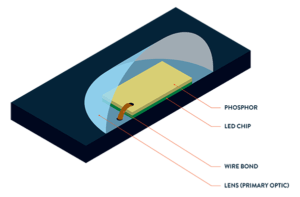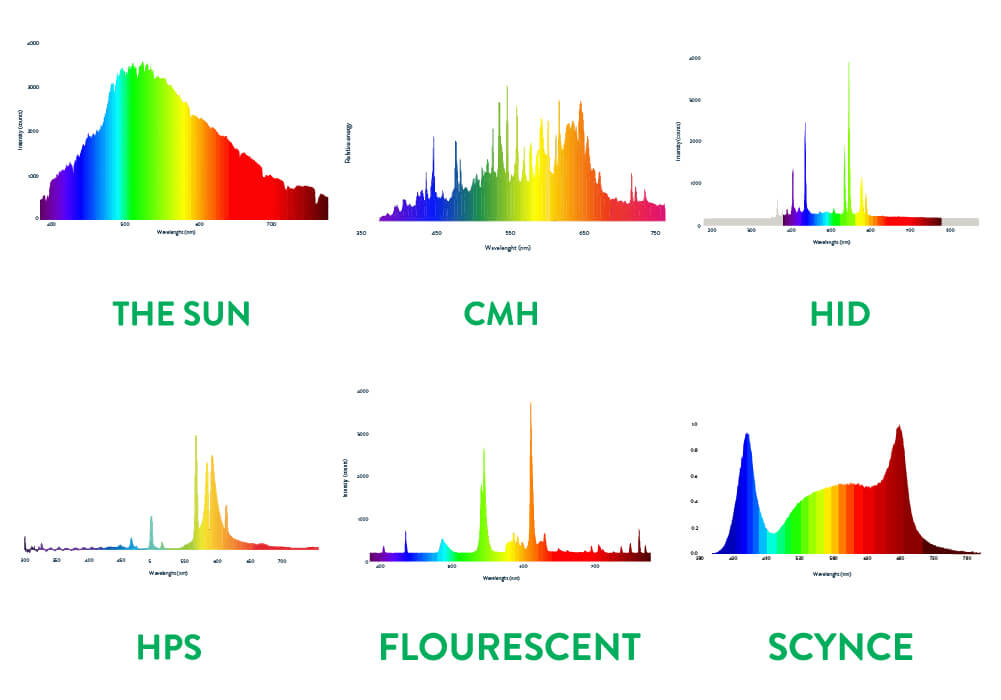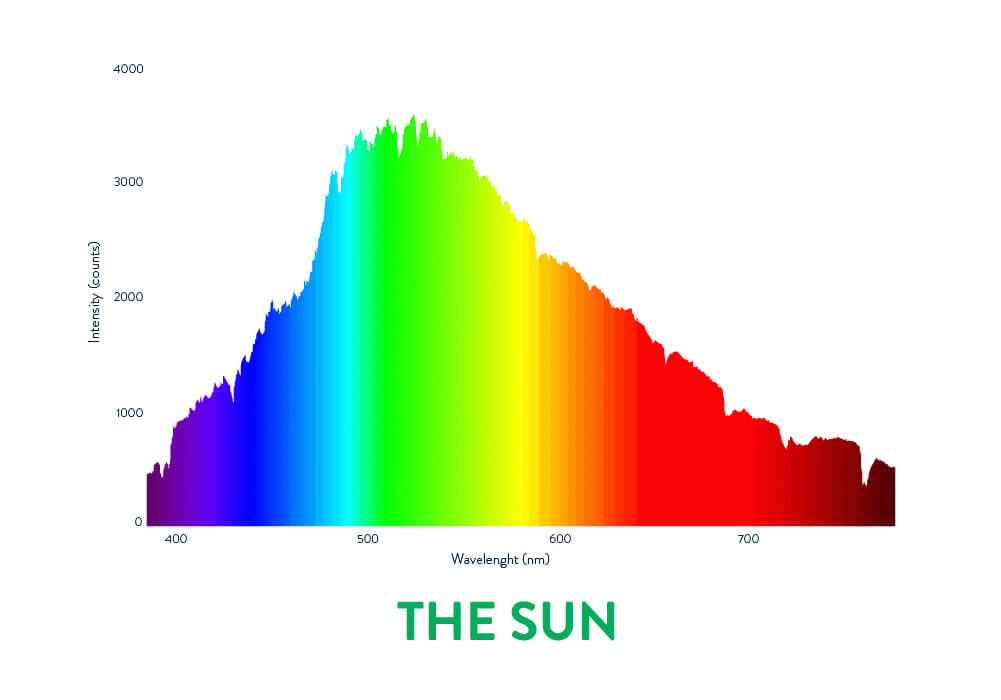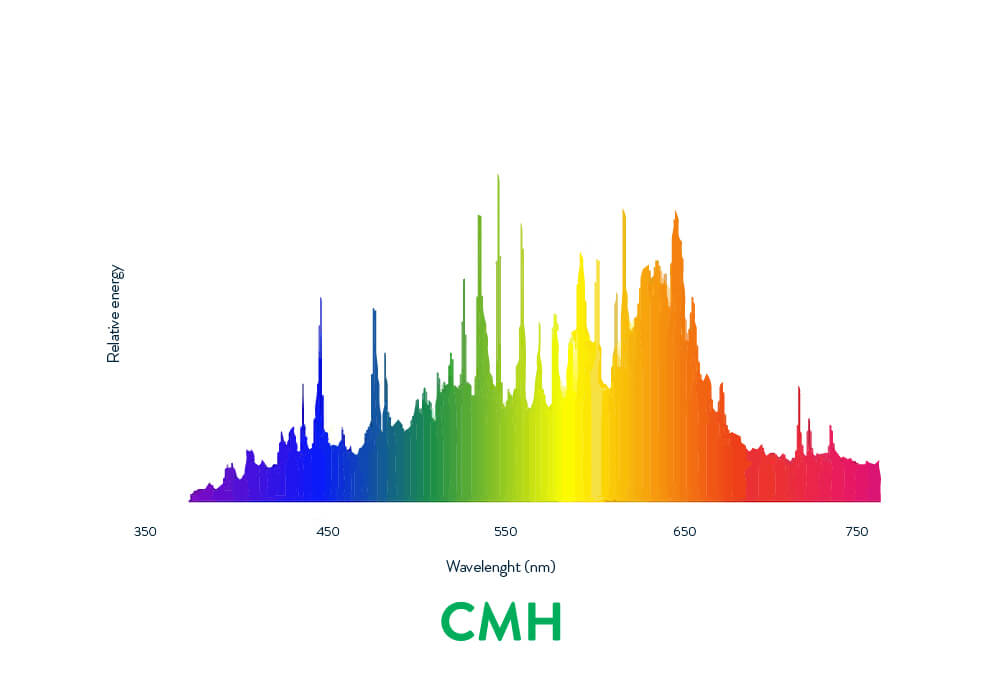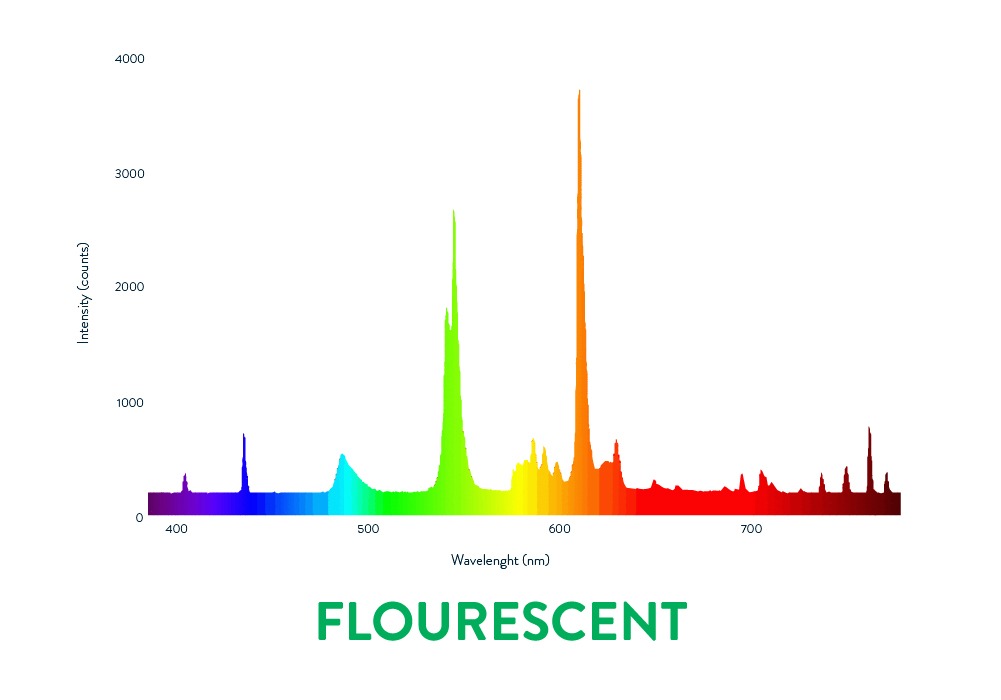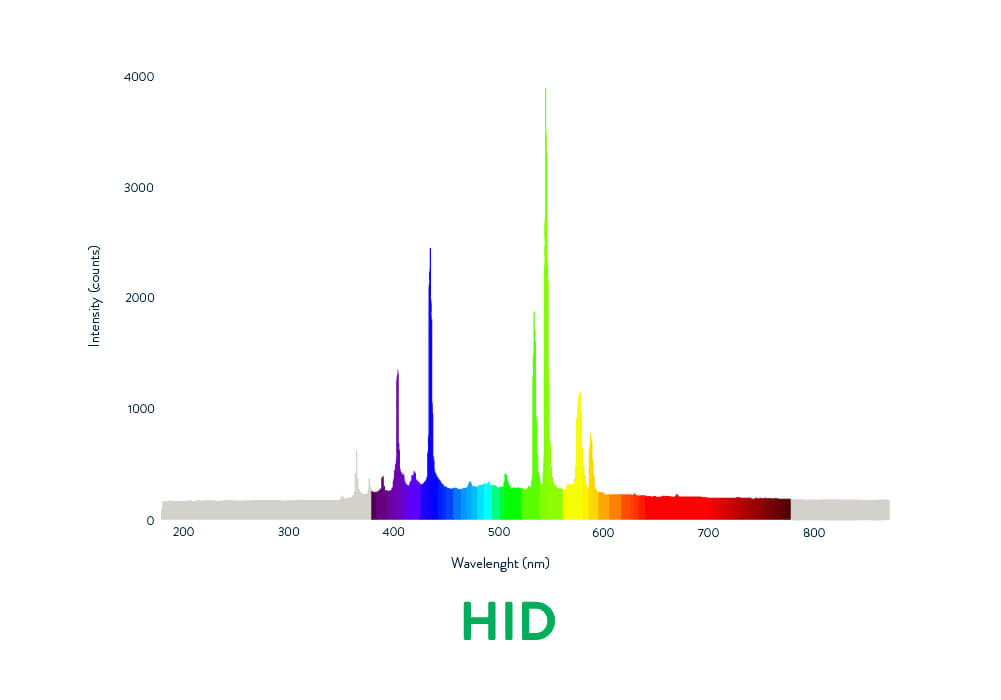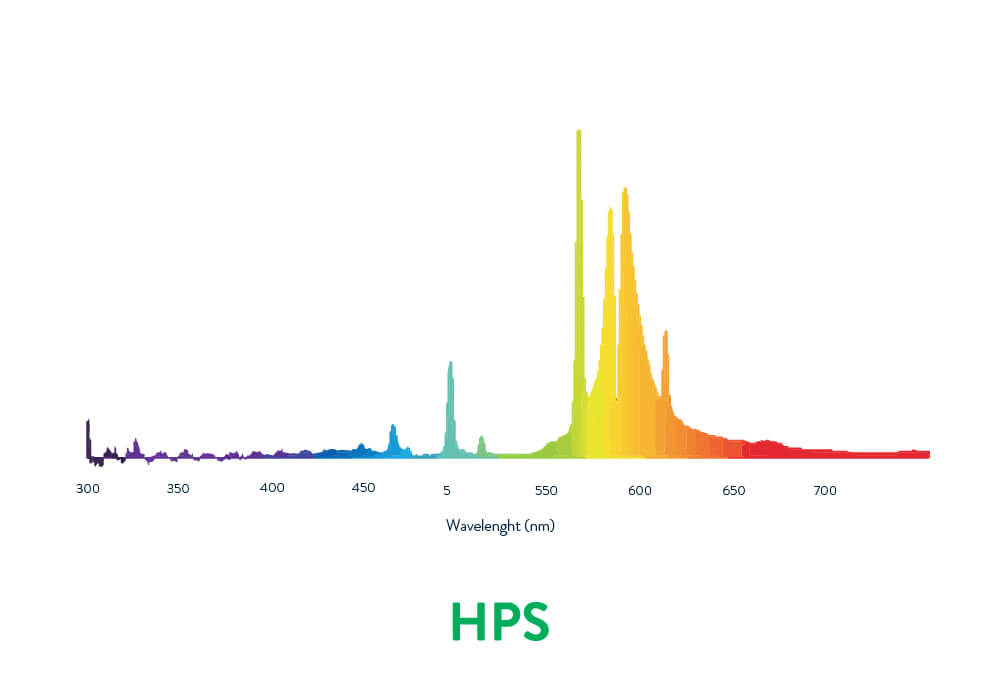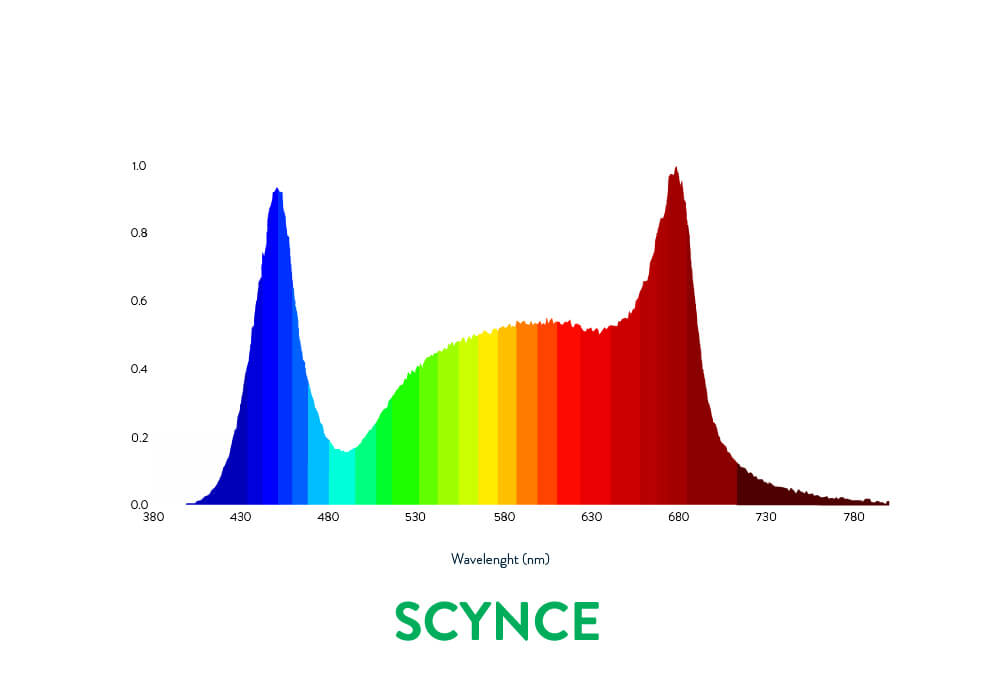LED grow light optics for deep canopy penetration
Our engineered optics allow for deeper penetrating light, promoting healthy and dense plants from root to canopy. Grow Deep!
The basics
LEDs are designed to emit light in a symmetrical 180° arc. That means the light energy is pushed out in virtually all directions at once, similar to if you were to blow up a balloon.
Most LEDs, including all white LEDs, start out as Blue LED’s and then have a layer of phosphor added that converts that blue energy to broad spectrum white. While all phosphor conversion takes some energy (lowering efficiency) it greatly increases the spread of that energy across the PAR range, which is extremely important when growing plants.
Cool white LEDs have lots of energy in the Blue and warm white LEDs have lots of energy in the Red sides of the spectrum, however they provide energy from virtually every part of the PAR spectrum (400-700nm). This allows plants to get a very similar type of energy to what they are used to from the sun.
Focus the energy
Intro to optics
Scynce utilizes secondary optics that are designed to focus the light energy, similar to how glasses help some of us see better. There is no other technology that can focus light from an LED to guarantee an even intensity across the grow surface, which is why we got them patented.
100% of the energy
goes to your plants
Optics cost us about 7-10% of the total energy, but it means more energy actually reaches the plants….which is all that really matters after all.
U.S. Patent No. 9,943,040 and Patent No. 9,955,632
No more hot spots!
Scynce’s secondary optics were specifically designed to spread out the pin point intensity that plague most LEDs and some traditional lights. This means that the brightest point is typically on the widest part of the beam (or on “the angle”) which allows the lights to be mounted closer to the plants without the risk of burning or bleaching.
Even intensity
Scynce’s patented optics provide even light intensity and a controlled radiation intensity preventing hot spots, burned spots, and off grid collateral light loss. With cross lighting, plants see equal intensity from all angles. This promotes intra-canopy growth, not just on the top like traditional lights.
TOP TO BOTTOM PROTECTION
Scynce’s lighting fixtures and lenses have been tested under chlorine dioxide gas exposure as well as sulfur sprays at manufacturer’s recommended dosage with no adverse effects. Additionally, oil based and non oil based fungicides and pesticides (such as Regalia and neem oil) used at manufactures recommendations will not degrade the lenses or the fixture. There’s no need to change your cultivation styles or techniques for us. Your lights are always protected underneath our 5-year warranty and nothing listed above will void it.
Beam power
Output patterns are another important aspect of what the gonio data can give us insight into. Why does output pattern matter you say? In our previous blog (available HERE) we discussed how light is like water coming out of a hose. Just as the pattern of water coming out of a hose can be influenced by a nozzle, making it a jet, shower or flat spray pattern, optics control the light coming off of a lighting fixture. Without a gonio, we would never understand any of this! Looking at the patterns in the Light Distribution Curve (taken from the gonio report) the difference in emission patterns immediately becomes evident.
Scynce LED beam vs typical LED beam
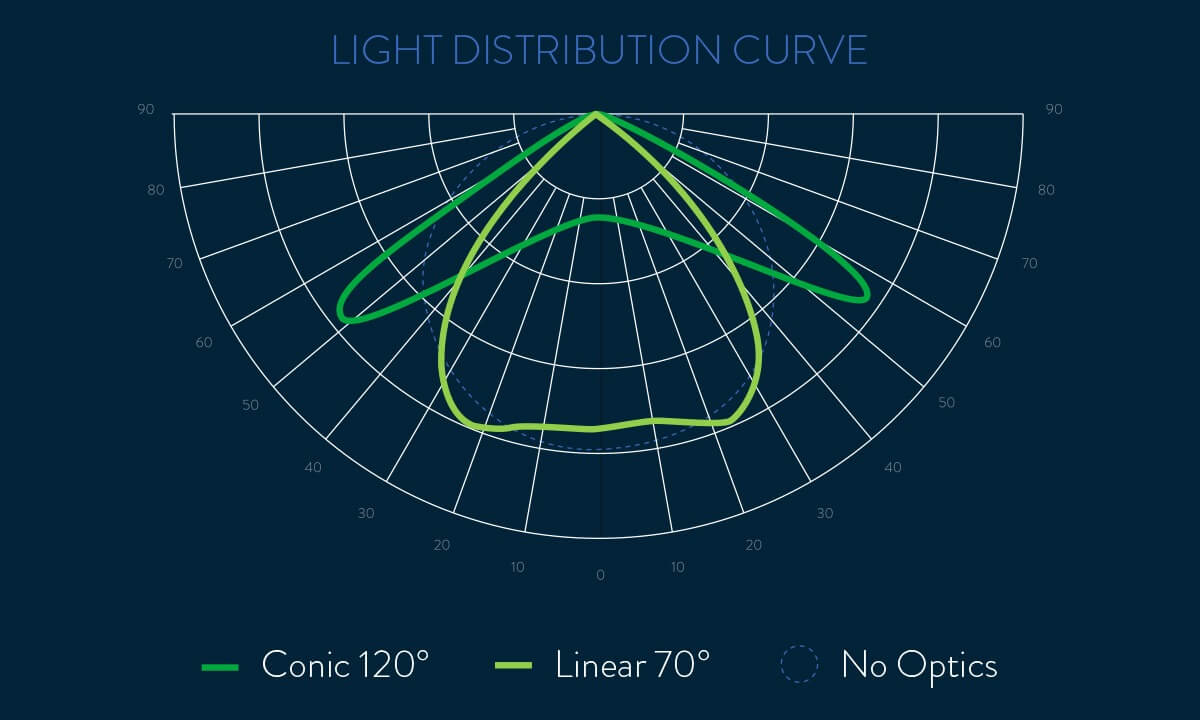
This is a diagram of Scynce’s Conic 120 and Linear 70 optics. The intensity (radiated energy) is significantly brighter on the outside of the beam. That creates even or slightly higher illuminance (light on the canopy) on the edge of it.
Want to learn even more about our new Linear 70 optic created especially for greenhouses & single level grows ? Dive Deeper
PAR Meters: Why they don’t work with Scynce lights
Benefits summary

Effectively creates vertical volume of grow facility

Equal intensity light from all angles (similar to natural lights).

NO hot or
burned spots

100% of the projected light
is on the canopy

